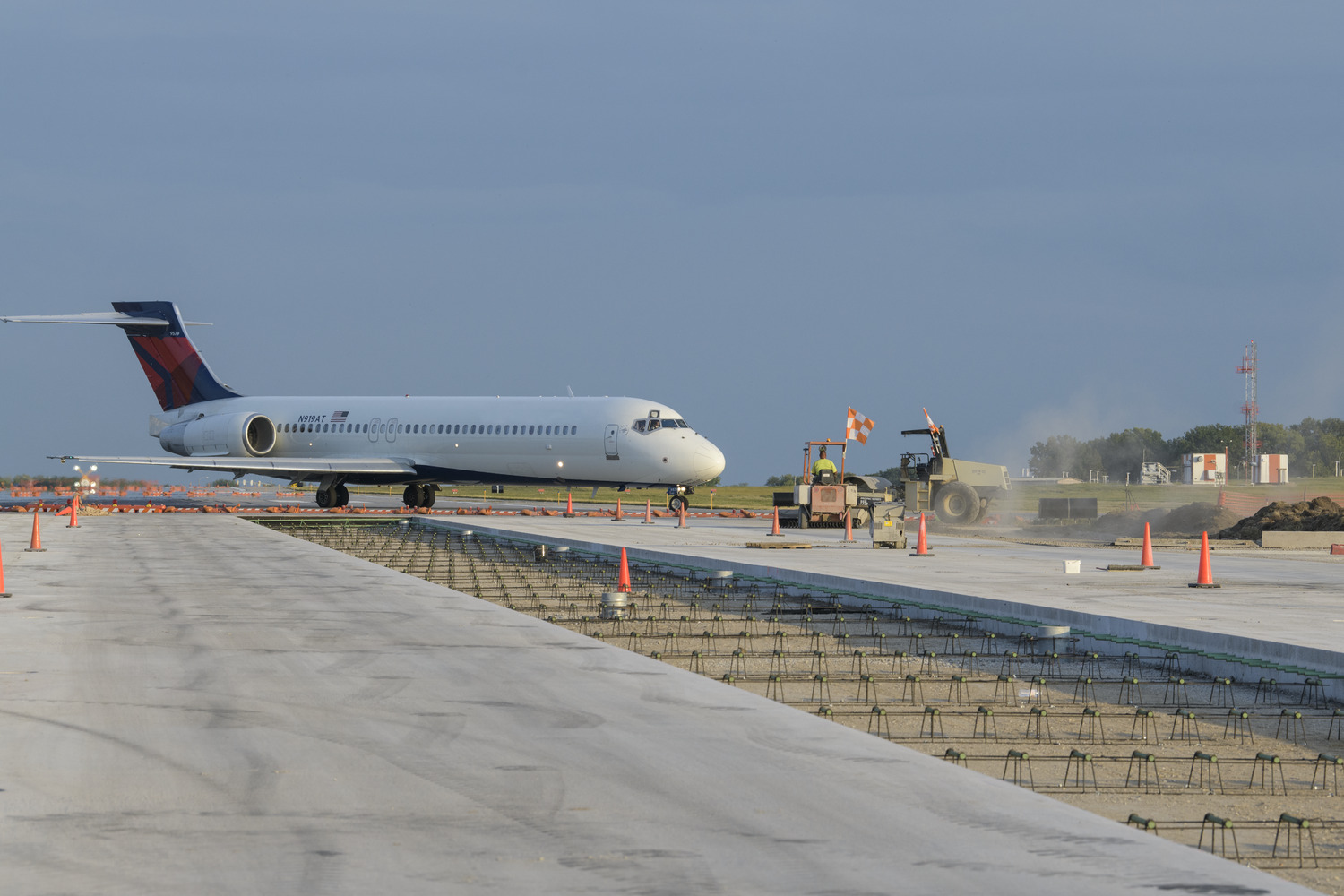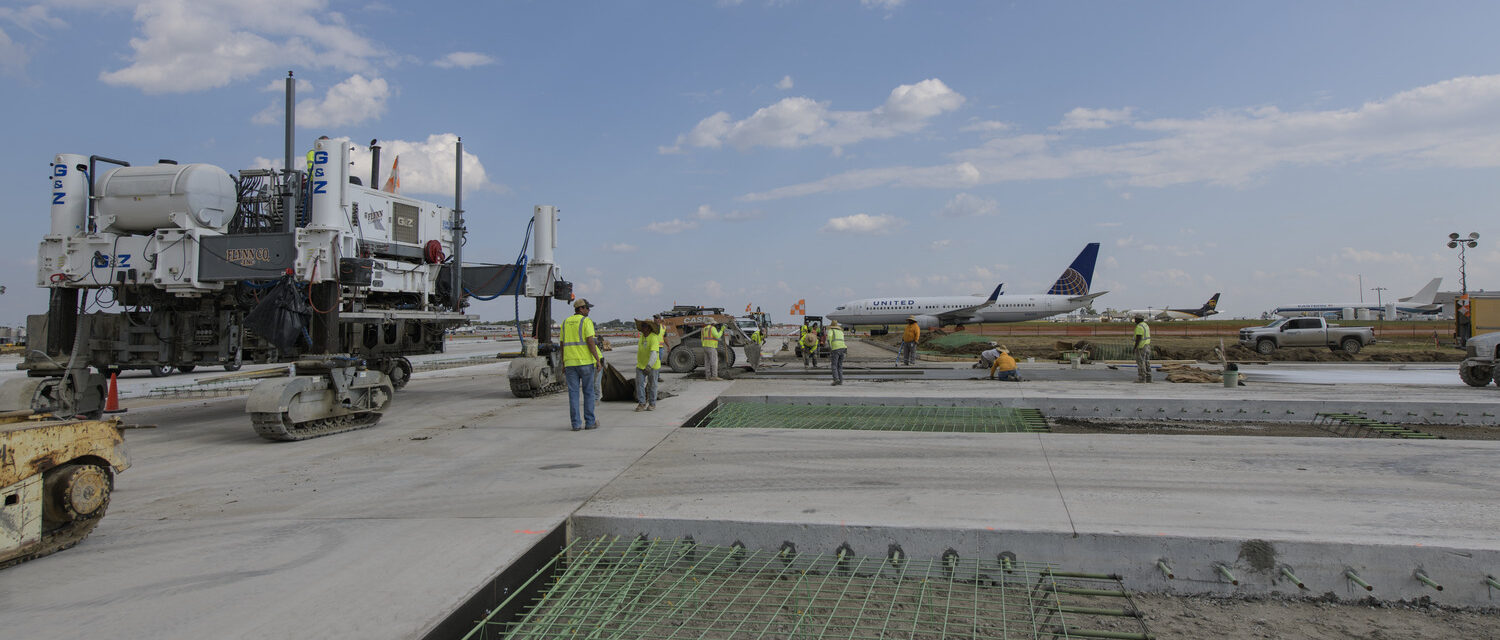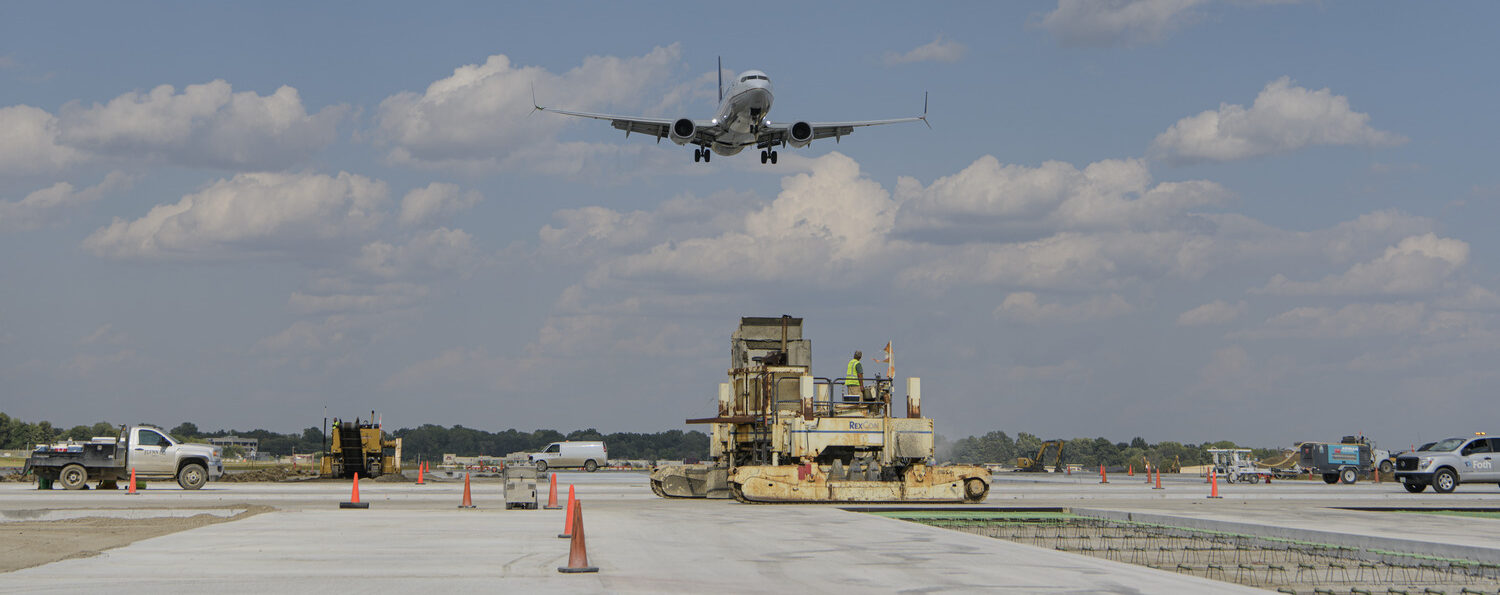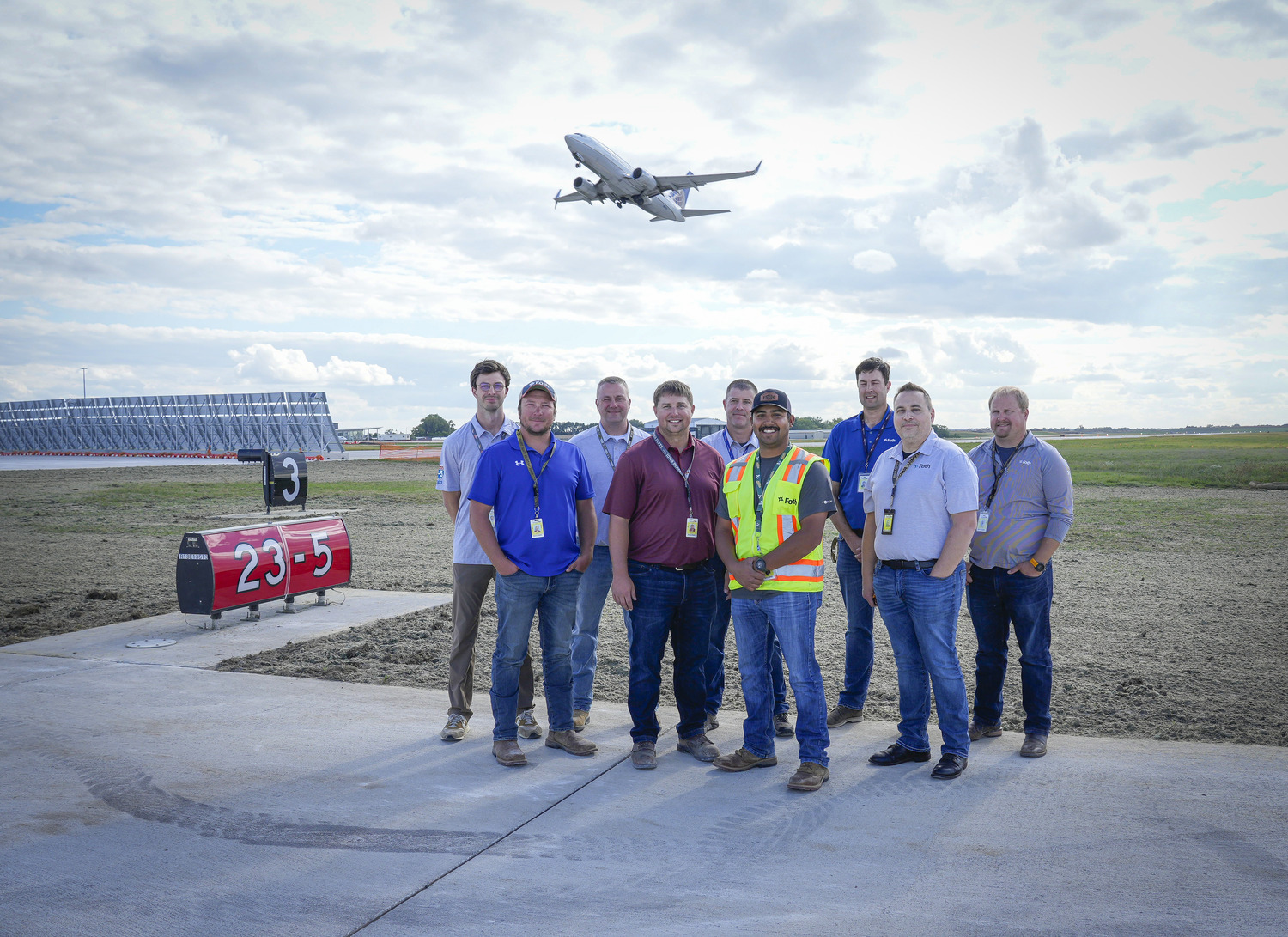
Des Moines International Airport (DSM) was facing deteriorating pavement within the intersection of its two runways. As some of the oldest pavement on the airfield, repairing this high-traffic area presented a unique challenge requiring collaboration between local, state, and federal entities; commercial and cargo air operators; and revenue considerations. Given our familiarity with their airfield and the many stakeholders involved, DSM turned to Foth Infrastructure and Environment, LLC to develop a solution that maintained operations while improving the overall runway system.
Background
Constructed in 1933 with the original airport’s construction, Runways 13/31 and 5/23 have been extended numerous times in the past 90 years. Eventually, both runways were expanded to their current length of 9,000 feet. Over time, runway pavements were overlaid with asphalt to provide a new wearing surface and additional strength to accommodate increases in aircraft size and weight.
Runway 13/31 had experienced accelerated pavement deterioration, with the intersection showing a dramatic decline in pavement condition index (PCI) rating since 2005. In 2013, the Des Moines Airport Authority (DMAA) engaged our team to evaluate Runway 13/31’s condition, including the intersection of the two runways, and develop a novel solution to improve the pavement and reduce ongoing maintenance concerns.
Engineering and Analysis
To understand why the intersection was deteriorating so rapidly, we completed a series of assessments:
- PCI update of airfield pavement, explicitly focusing on Runway 13/31 and the intersection.
- Heavy Weight Deflectometer testing to establish strength and condition of the underlying subgrade, subbase, and original concrete pavement.
- Pavement cores to determine layer thicknesses and condition.
- Petrographic analysis to determine whether issues existed with the materials used in the original runway construction.
- Scan of runway pavement to evaluate grades.
Our evaluation revealed the underlying concrete was structurally failing, crumbling under the asphalt overlays. As a result, the most recent overlay was deteriorating faster than planned due to a lack of support from underlying layers. The in-pavement runway light system did not allow water to drain from the conduits, and the lighting equipment was reaching the point of failure due to water and ice damage. Additionally, grades along the runway and within the intersection needed to be changed to improve drainage and meet FAA requirements.
 Developing Options
Developing Options
During the preliminary design phase, our team developed three reconstruction solutions for the runway intersection. Each option focused on providing a long-lasting pavement section while addressing the identified shortcomings.
- Nightly airfield closure.
Start work after the last flight of the day and end before the first flight the following day. Collaboration with airlines and cargo operators would be needed to adjust schedules, allowing up to eight work hours per closure. - Weekend airfield closure.
Following the final Friday evening arrival, close the airfield and complete construction prior to the first flight Monday morning departure. Closures would span an estimated 14 weekends, allowing 56 work hours per closure. Roughly 3,000 commercial flights and 140 cargo operations would be lost with this option. - Continuous work within the intersection.
Complete construction work within the intersection while operating from a single shortened runway over a 33-day period. A temporary extension on Runway 5/23 would allow airport operations to continue during the project.
A Collaborative Solution Emerges
Our findings and options were presented to the FAA, DSM airport engineering, and operations staff. A benefit-cost analysis of options created a more complete picture of each option’s impact, allowing the airport to determine the best solution for the project’s goals. Throughout the process, we coordinated with the airlines and cargo carriers to better understand their operational constraints and keep them updated on progress. A contractors’ forum was held with asphalt and concrete pavers, electricians, and general contractors to ensure the options were feasible and could be constructed within the allotted runway closure window.
Key stakeholders opted for a temporary extension of Runway 5/23, providing 6,200 feet of usable runway length while continuous construction operations within the intersection occurred. This option would allow airlines and cargo carriers to operate continuously at DSM and contractors to utilize standard construction materials and methods within an accelerated timeline.

Preparation and Execution
In conjunction with developing detailed engineering plans and specifications, we prepared an Airport Layout Plan to represent how the airport would look while the temporary runway extension was in place. As part of the plan, an airspace survey identified any potential obstructions to aircraft operating on the temporary runway. We also worked with the FAA flight procedures office to develop temporary approach procedures to the relocated runway ends.
Throughout the process, we communicated with airport operators and the FAA, confirming that the temporary runway met their needs and provided a safe environment for aircraft and contractors working directly off the end of the runway. As part of this effort, we added a blast wall at the edge of the work area to prevent worker injuries from jet blasts. We also removed trees and lowered a hillside to provide safe clearance for aircraft arriving and departing from the temporary runway.
In addition, enabling projects were completed on both runways that addressed existing pavement, drainage, and electrical concerns and made the intersection closure possible.
 Intersection Reconstruction
Intersection Reconstruction
After wrapping up the preparatory phases in 2022, DSM embarked on the main event—reconstruction of the intersection with a goal of providing 30 years of safe, sustainable use.
Material procurement began in 2022, one year prior to the start of construction to account for COVID-related supply chain disruptions. The temporary extension of Runway 5/23 was completed and commissioned by the FAA in July 2023; and Runway 13/31 was closed and all traffic switched over to the temporary runway in August 2023.
Throughout intersection reconstruction, our team conducted twice-weekly progress meetings with DSM staff, FAA staff, engineering and material testing firms, and the contractor to proactively deal with any unforeseen challenges. The contractor detailed their schedule down to six-hour increments to tightly track progress and complete the project within the allotted 33 calendar days. Team member responsiveness was pivotal, so much so that when poor subgrade soils were encountered in the early hours of Labor Day morning, Foth’s construction manager arrived onsite within the hour and the team devised a solution that allowed operations to resume within three hours.
In total, 17,000 square yards (more than three football fields) of Portland cement concrete were placed, along with drainable concrete base, in-pavement lighting, and pavement shoulders. Ultimately, the team completed the project in 28 days, five days before the contracted 33-day deadline. DSM reopened the intersection for full use on September 27, 2023.
Cost Savings and Benefits
The intersection project—in conjunction with enabling runway projects—provides DSM with at least 30 years of low-maintenance runway pavement, improved airfield safety through the removal of hot-spot areas, reduced energy use through installation of LED runway and taxiway lighting, and improved downstream water quality through completion of the stormwater detention systems. With an up-to-date runway system in place, DMAA can now move forward with redevelopment of its passenger terminal complex, supporting the needs of the travelling public for many years.
Markets: Airports
Services:

